If you thought Saturn’s moon Enceladus couldn’t get any more bizzare — with its magnificent plumes, crazy tiger-stripe-like fissures and global subsurface salty ocean — think again. New images of this moon’s northern region just in from the Cassini spacecraft show surprising and perplexing features: a tortured surface where craters look like they are melting, and fractures that cut straight across the landscape.
“We’ve been puzzling over Enceladus’ south pole for so long, time to be puzzled by the north pole!” tweeted NASA engineer Sarah Milkovich, who formerly worked on the Cassini mission.
While the Cassini mission has been at the Saturn system since 2004 and flown by this moon several times, this is the spacecraft’s first close-up look at the north polar region of Enceladus. On October 14, 2015 the spacecraft passed at an altitude of just 1,839 kilometers (1,142 miles) above the moon’s surface.
See more imagery below:
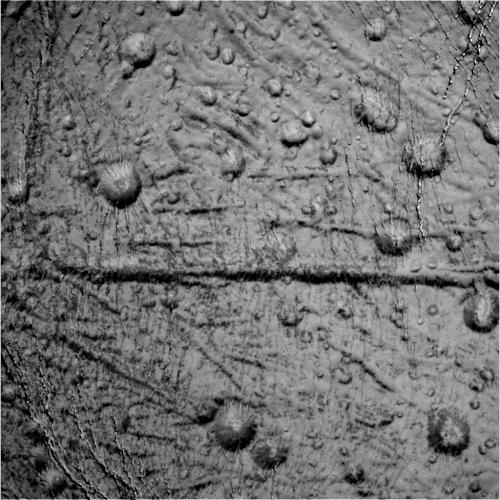
The reason Cassini hasn’t been able to see the northern terrain of Enceladus previously is that it was concealed by the darkness of winter. It’s now summer in the high northern latitudes, and scientists have been anxious to take a look at this previously unseen region. Gauging by the posts of “Wow!” and “Enceladus what are you doing??” by scientists on social media, the Cassini team is as excited and perplexed by these images as the rest of us.
“We’ve been following a trail of clues on Enceladus for 10 years now,” said Bonnie Buratti, a Cassini science team member and icy moons expert at NASA’s Jet Propulsion Laboratory. “The amount of activity on and beneath this moon’s surface has been a huge surprise to us. We’re still trying to figure out what its history has been, and how it came to be this way.”
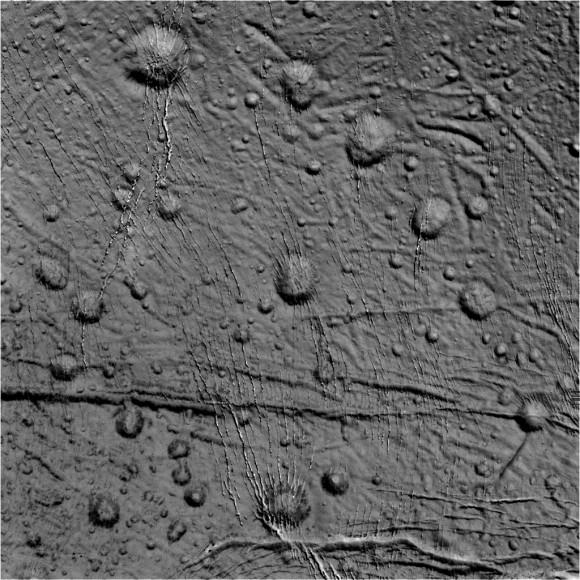
While these raw images just arrived this morning, already image editing enthusiasts have dived into the data to create composite and color images. Here are two from UT writer Jason Major and image contributor Kevin Gill:
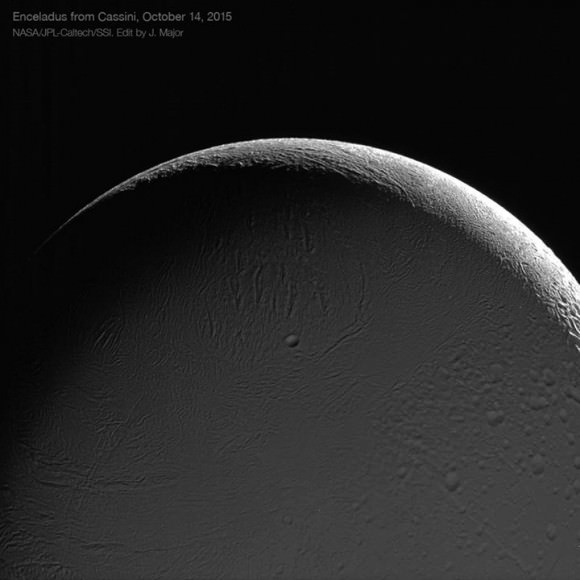
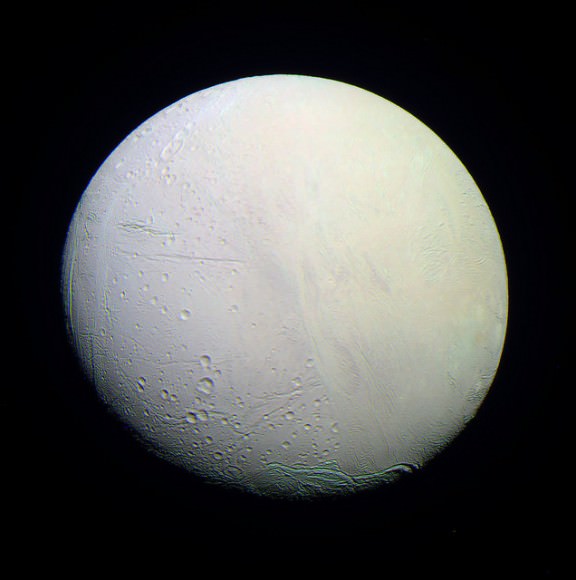
In an email, Cassini imaging team leader Carolyn Porco explained the flyby: “Our cameras were active during most of this encounter, allowing the imaging team and other remote-sensing instrument teams to observe the Saturn-opposing side of Enceladus on the inbound leg of the encounter, and a narrow, sunlit crescent outbound.”
From previous imagery and study of this moon, it has been suggested that the fractured and wrinkled terrain on Enceladus could be the scars of a shift in the moon’s spin rate. The moon has likely undergone multiple episodes of geologic activity spanning a considerable portion of its lifetime.
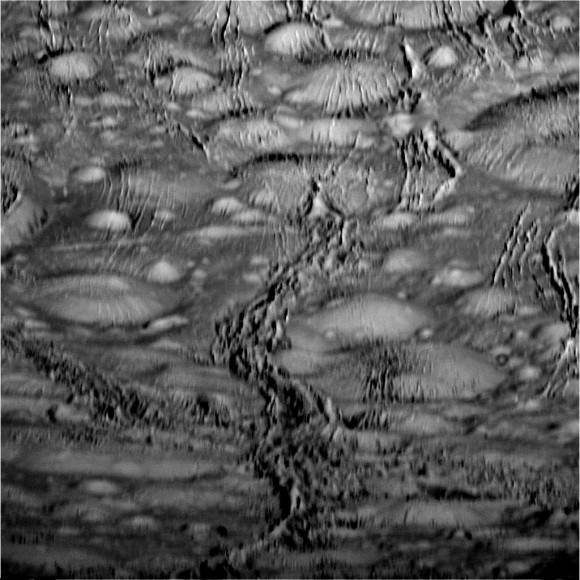
While these images are incredible, get ready for even more. An even closer flyby of Enceladus is scheduled for Wednesday, Oct. 28, during which Cassini will come dizzyingly close to the icy moon, passing just 49 kilometers (30 miles) above the moon’s south polar region. NASA says that during this encounter, Cassini will make its deepest-ever dive through the moon’s plume of icy spray, collecting images and valuable data about what’s going on beneath the frozen surface. Cassini scientists are hopeful data from that flyby will provide evidence of how much hydrothermal activity is occurring in the moon’s ocean, and how the amount of activity impacts the habitability of Enceladus’ ocean.
Then another flyby — Cassini’s final scheduled close flyby of Enceladus — on Dec. 19 will examine how much heat is coming from the moon’s interior from an altitude of 4,999 kilometers (3,106 miles).
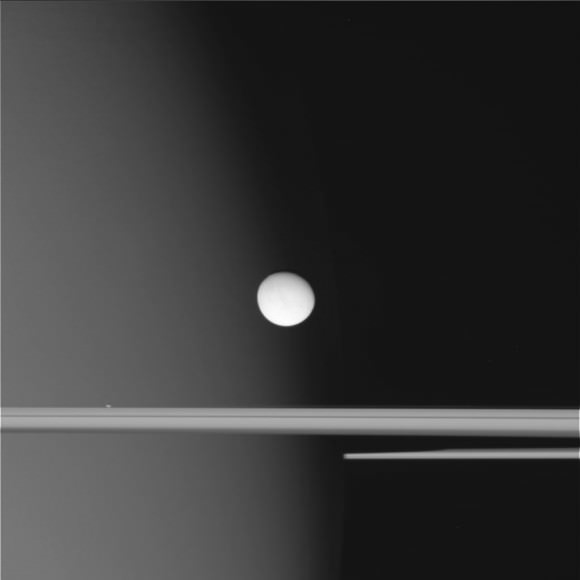
An interesting side note is that the Cassini mission launched 18 years ago today (October 15, 1997).
Again stay tuned for more, and you can see all of Cassini’s raw image here, and find out more details of the upcoming flybys at this CICLOPS page.

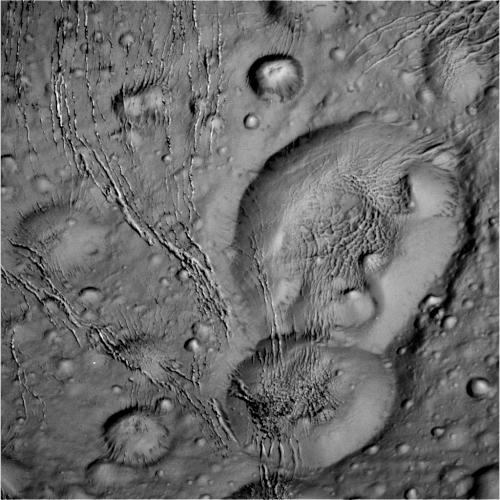
Pretty amazing imagery.
I suspect that the “melting” appearance of the craters and the curves in the linear features are due to the plasticity of the ice over time, which in turn would be attributable to the tidal effects of Saturn’s gravity.
years of excellent science, what a spacecraft!
I agree!!
The return on investment from Cassini has been amazing. And, it will keep paying dividends in the future as the data it’s collected is processed by future astronomers.
If interested, check out an article I did on the cost of the Cassini mission. – http://om-blog.orbitalmaneuvers.com/2014/08/31/the-cost-of-cassini-at-saturn/